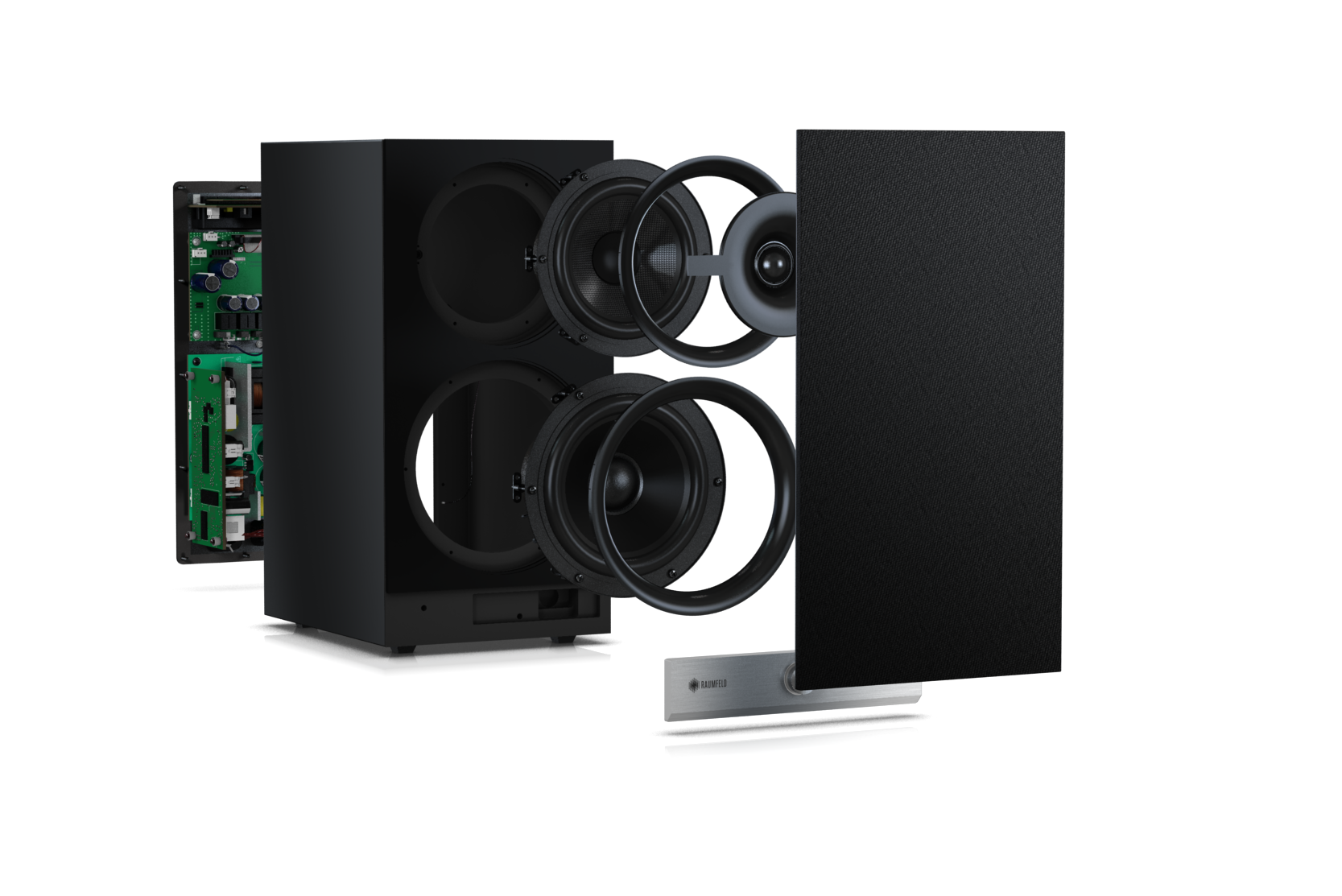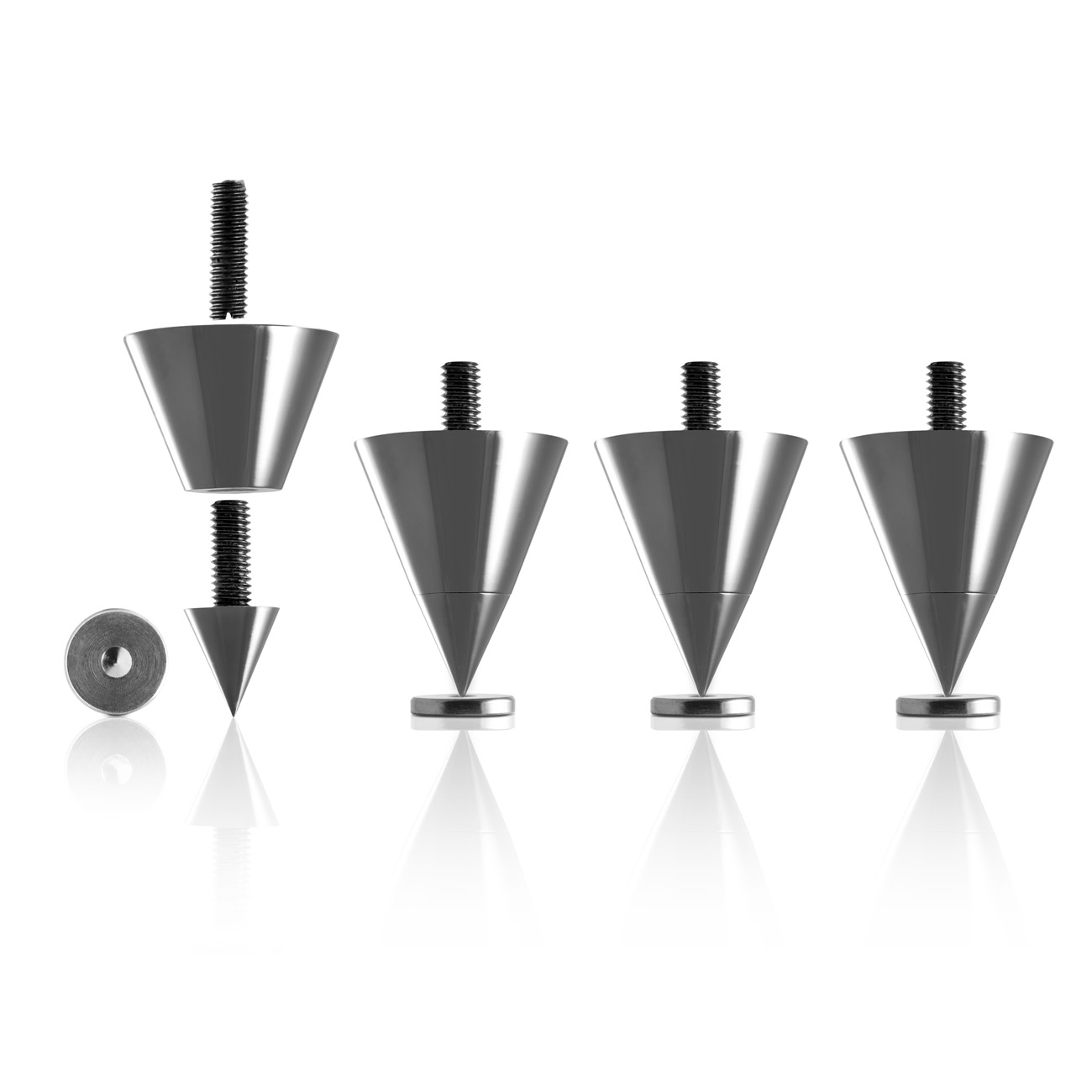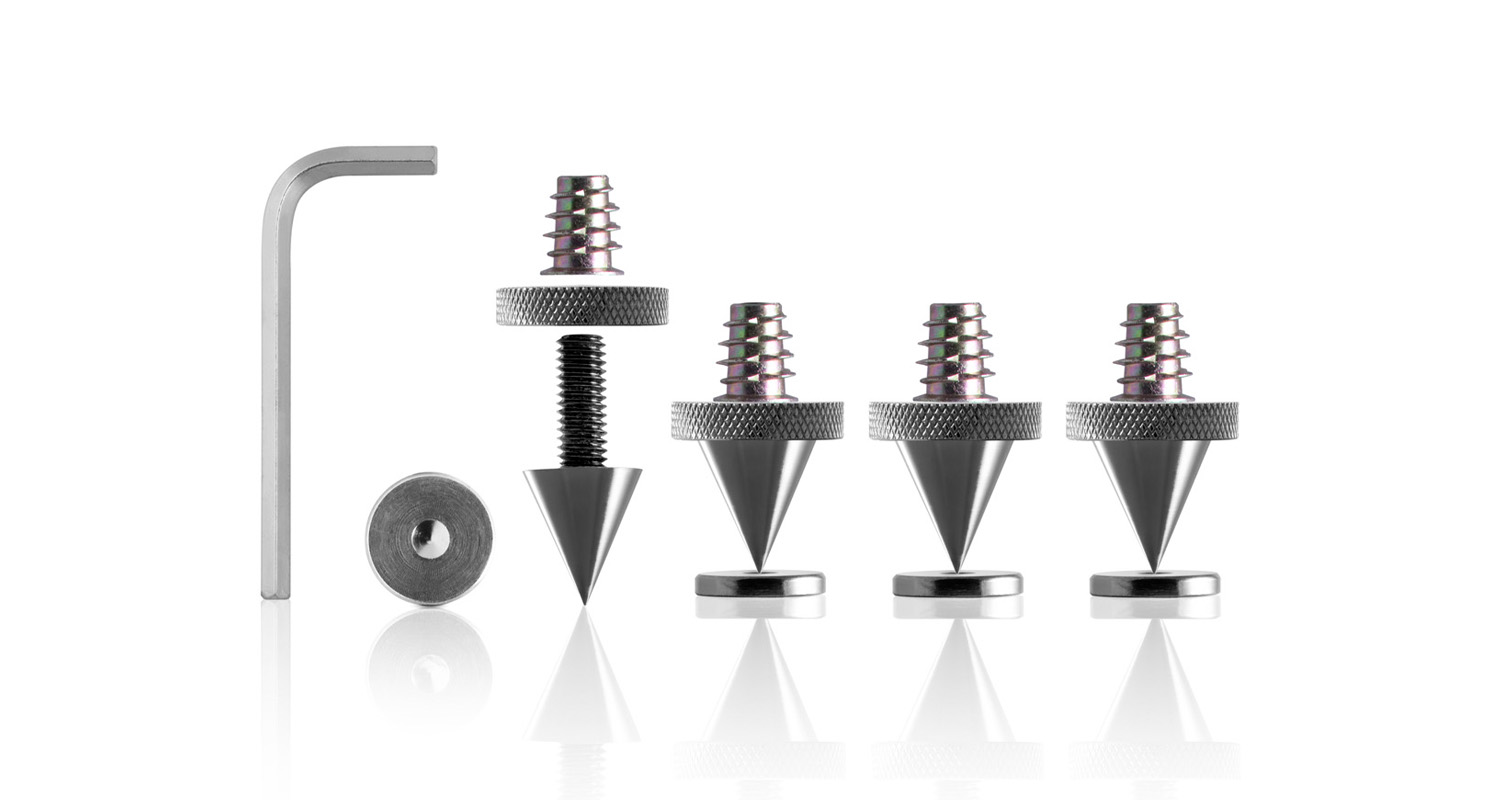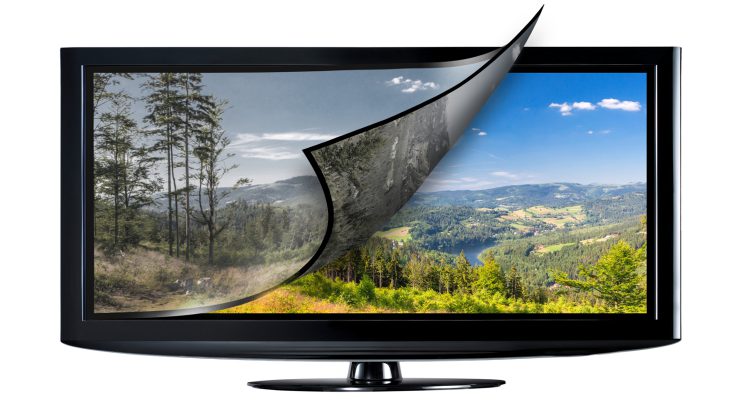When it comes to setting up your speakers, it’s not just a question of where you place them but of how. All interactions between your loudspeakers and the room they occupy in will affect the sound they produce. Other articles in this blog have have focused on how speaker react to the room as a whole. This article deals with how speakers interact with the floor and how these interactions can be altered to enhance sound quality. We will cover two basic methods of enhancing sound quality by tweaking your speaker’s relationship to the floor: Speaker de-coupling and coupling.
Controlling vibrations is the key to good sound
The sound produced by a loudspeaker is the result of a vibrating membrane. Driven by alternating current, sound waves that we experience as sound are produced by these membranes. An important factor in the quality of sound is the accuracy of the membrane’s excursion, or back-and-forth movement. This should correspond as accurately as possible to the audio signal.

Ideally, no other vibrations will affect the free movement of the membrane. Speaker enclosures, for instance, that resonate with the membrane can negatively affect the ability of the membrane to stop and start with precision. The result is a distorted sound and is why low resonance materials like wood and aluminium are typically used in loudspeaker construction. Adequate bracing will also keep the enclosure from moving along with the driver and membrane.
Another factor that keeps a speaker enclosure from resonating is the speaker’s relationship with the floor. To ensure precision and balance, it’s important to either de-couple or couple the speaker from the floor to the greatest extent possible. This sounds very contradictory at first. How can doing one thing or it’s opposite have the same effect? Read on to learn how both coupling and decoupling can minimize unwanted vibrations.
Speaker decoupling through damping
One basic strategy when it comes to minimizing enclosure vibrations is to ensure the speaker does not sit directly on the floor. Known as “decoupling”, this is a good option if your floor is very “alive”: for instance, if you have a wooden floor that reacts to every footfall and movement.
Rubberized stand feet can help as can that do-it-yourself classic: The tennis ball sawed in half. Sometimes placed under the feet of a speaker, the rubber in the tennis ball reduces the amount of vibrations that can pass to and from the speaker. Professional damping feet and pads, however, work better and are more likely to match your interior.
Coupling your speaker to the floor
“Coupling” is a technique that seeks to minimize unwanted resonances by increasing a speaker’s connectedness to the ground. By making the speaker a part of the floor to the greatest extent possible, the vibrations from the speaker do not get pushed back into the enclosure. Instead, they are lost in the floor’s much greater mass. This is a good option for concrete floors or other very solid surfaces.
The most popular method for coupling speakers to the floor is spikes. Supporting the speaker on all four corners, the spikes face downwards and rest on a small metal plate (so as not to bore a hole in your floor). The effect is to minimize the influence of enclosure vibrations. Especially with subwoofers, spikes can lessen distortion.

Teufel subwoofer and speaker spikes
Powerful sound systems require the appropriate floor placement. That’s why Teufel offers spikes specially adapted to the needs of subwoofers and loudspeakers.
• ✔ Speaker spikes: These premium metal spikes come with integrated screw inserts and mounting discs. Teufel speaker spikes can be fitted on the following models: M 520 F, M 420 F, M 320 F, T 400 Mk2, Theater 500, Ultima 40 Mk2 and the Raumfeld Stereo L
• ✔ Subwoofer spikes: Teufel subwoofer spikes reliably direct vibrations from the speaker to the floor. Delivery includes integrated screw inserts and mounting discs. Subwoofer spikes can be fitted on the following Teufel subwoofers: M 4500 SW, M 5500 SW, L 5200 SW, M 6200 SW.
Coda: Coupling and decoupling for better sound
• Decoupling your loudspeaker from the floor prevents the transfer of unwanted vibrations
• Rubberised absorbers are generally used to prevent the transfer of energy
• In rooms with strong flooring, coupling the speaker to the ground can also reduce vibrations
• Spikes are the most popular method of speaker decoupling
[product id=”27522,27011,27019″]
All pictures: Property of Teufel Audio



